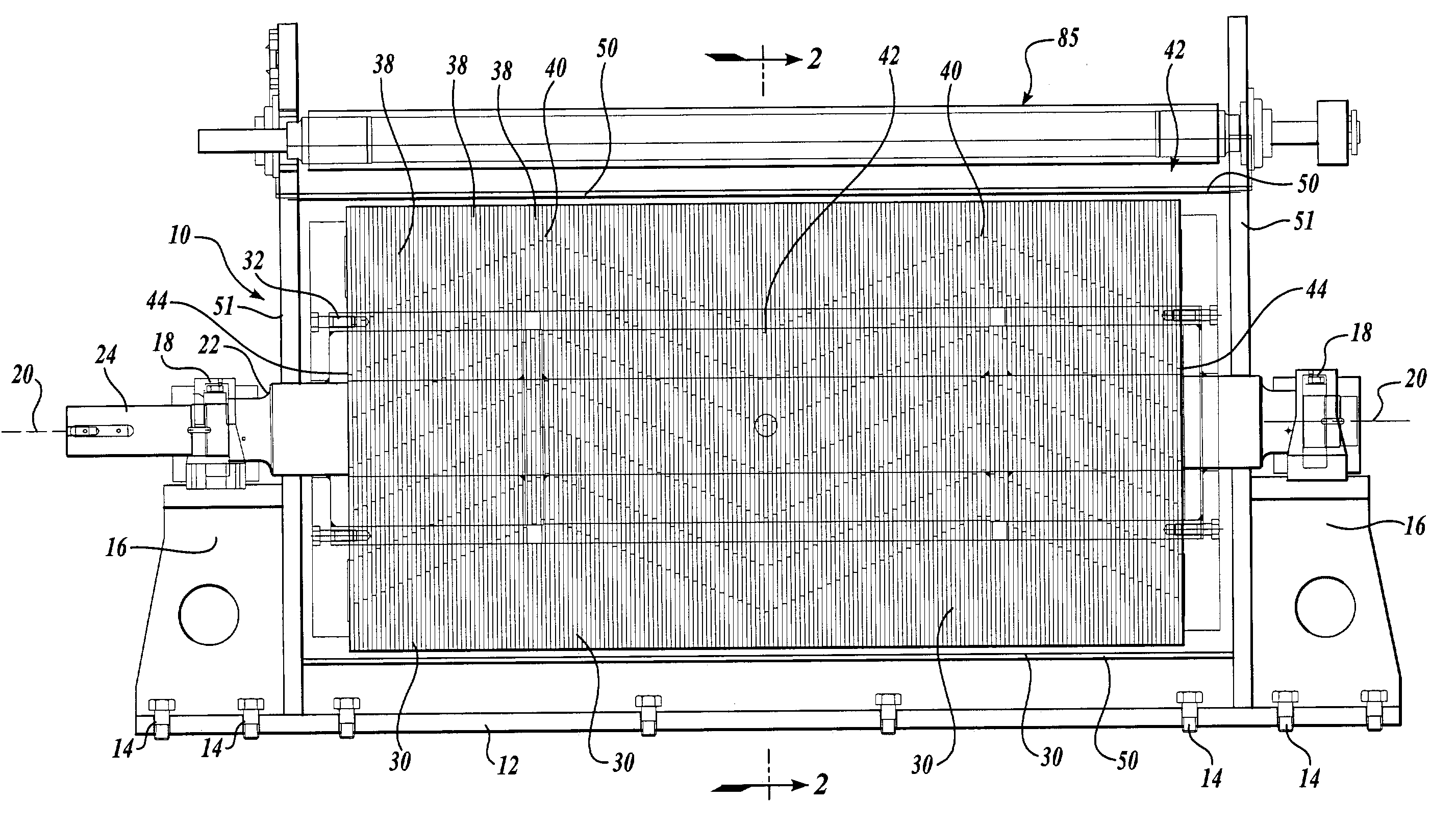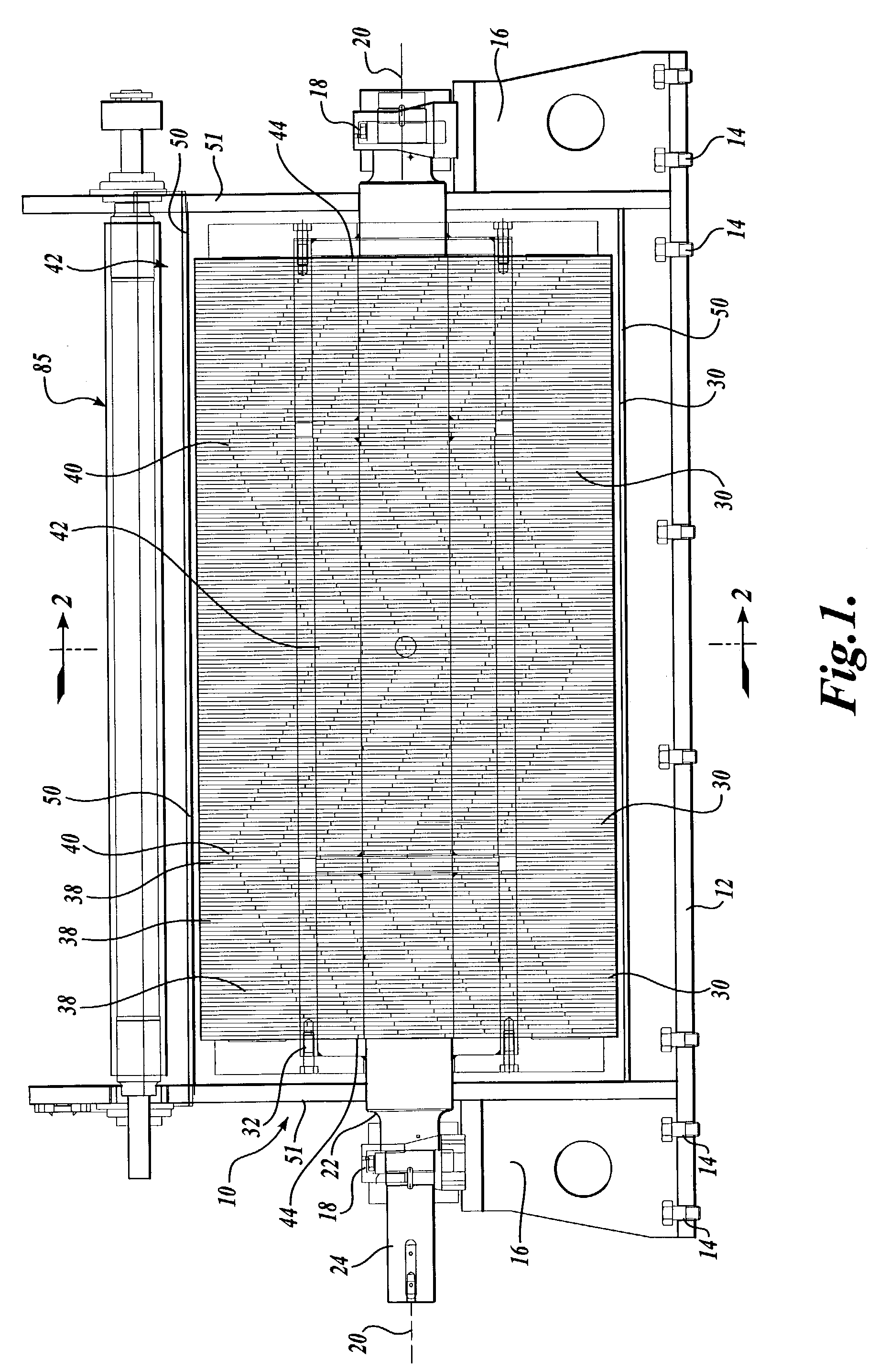Process for singulating cellulose fibers from a wet pulp sheet
a technology of cellulose fibers and pulp sheets, applied in the field of singulating cellulose fibers from wet pulp sheets, can solve the problems of increasing the cost of singulating, needing additional processing, and excessive noise of prior hammermills
- Summary
- Abstract
- Description
- Claims
- Application Information
AI Technical Summary
Problems solved by technology
Method used
Image
Examples
example 1
[0045]A conventional debonded softwood pulp sheet is wetted with a crosslinking agent in a conventional manner and fed into a conventional hammermill at a rate of 30.5 meters per minute. The wetted sheet has a consistency of about 62%. In this hammermill, the air is introduced downstream of the feed slots near the horizontal plane at the point of discharge. The hammer tip speed of the conventional hammermill is approximately 2896 meters per minute. Volumetric in-flow air to the hammermill is about 127.5 cubic meters per minute, and the out-flow velocity is about 1463 meters per minute. The hammermill fiber is separated from the air stream in a cyclone. A conventional air moving fan is employed downstream of the hammermill and has tip speeds of about 4267 meters per minute. The material is then sent through a conventional fluffer for further fiber opening followed by a second product fan where it is then introduced into a conventional dryer. The product is tested and found to have Pu...
example 2
[0046]A debonded softwood pulp sheet is wetted with a crosslinking agent with the apparatus described above in conjunction with FIGS. 8 and 9, and run through a hammermill having a chevron rotor of the type disclosed herein. The pulp is fed at a sheet speed of about 30.5 meters per minute and is first wetted to a consistency of about 68%. The hammer tip speed is about 5486 meters per minute and the air to fiber ratio is about 4 grams of air per gram of wet fiber. The fan is operated at a tip speed of about 5791 meters per minute. The conduits are sized so as to achieve a flow velocity ranging from 1829 to 3048 meters per minute. The material is taken directly from the cyclone and is run through a first stage dryer without introducing it into a fluffer or a second product fan. The product is tested and found to have a Pulmac wet knot content of less than about 0.05% and sonic knots ranging from 1% to 2%.
PUM
| Property | Measurement | Unit |
|---|---|---|
| angle | aaaaa | aaaaa |
| angle | aaaaa | aaaaa |
| angle | aaaaa | aaaaa |
Abstract
Description
Claims
Application Information
 Login to View More
Login to View More - R&D
- Intellectual Property
- Life Sciences
- Materials
- Tech Scout
- Unparalleled Data Quality
- Higher Quality Content
- 60% Fewer Hallucinations
Browse by: Latest US Patents, China's latest patents, Technical Efficacy Thesaurus, Application Domain, Technology Topic, Popular Technical Reports.
© 2025 PatSnap. All rights reserved.Legal|Privacy policy|Modern Slavery Act Transparency Statement|Sitemap|About US| Contact US: help@patsnap.com



